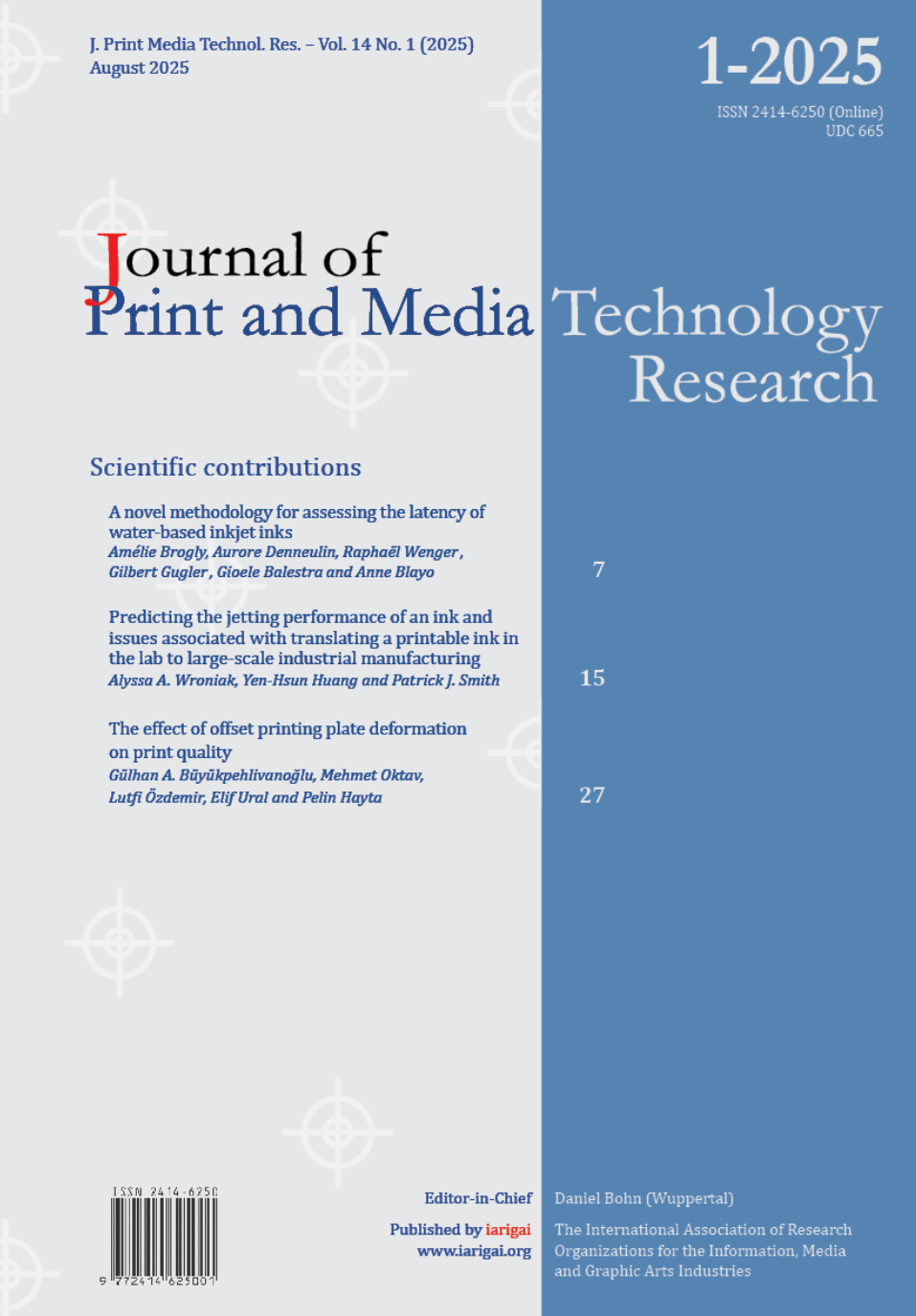A novel methodology for assessing the latency of water-based inkjet inks
Main Article Content
Abstract
The use of digital printing in the printing industry continues to expand and evolve, largely due to the versatility of inkjet technology, which offers extensive possibilities in terms of customisation and a wide range of applications compared to conventional printing techniques. Moreover, growing environmental awareness drives the development of water-based inks. However, the use of aqueous inkjet inks requires considerable expertise in the drop-on-demand ejection process. Indeed, a common issue with inks of this nature is the generation of defects in printed designs, such as missing areas and lines, often caused by nozzle latency. The latency phenomenon occurs when nozzles fail to fire drops after a period of inactivity (idle time). This paper presents two innovative quantitative methods to assess the latency phenomenon of water-based inkjet inks: one involving direct observation of printed results thanks to a specific test form, and another focusing on the observation and analysis of the drop ejection. These techniques can help ensure a reliable ink ejection in an industrial production context.
Article Details

This work is licensed under a Creative Commons Attribution-NonCommercial 4.0 International License.
